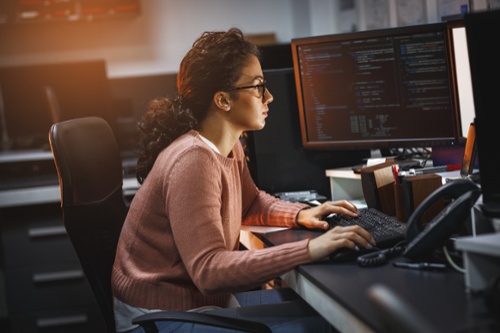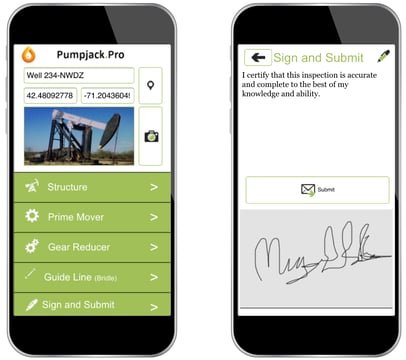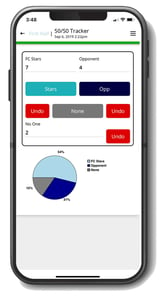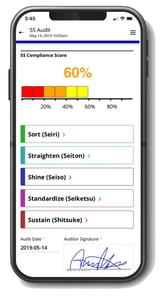According to Forrester, 84% of companies have turned to low-code development platforms to maximize IT resources and speed up time-to-market. By using low-code tools, more small and medium-sized businesses can engage in digital asset.
Low-code development offers enterprises the opportunity to speed up app development at a lower cost. Non-technical employees can contribute which minimizes the IT department's workload, while developers can add custom code when needed.
Companies in the manufacturing, medical, transportation, and other industries use Alpha Software’s platforms to develop solutions that allow employees to work remotely. Using low-code platforms, developers and business users collaborate on projects that add more value. Low-code is one of the main drivers of digital transformation. Research shows that organizations that have adopted low-code have achieved positive ROI.
Gartner predicts that by 2022, low-code platforms will take the largest share of the low-code technology market, increasing nearly 30% from 2020 to 5.8 billion in 2021. By 2024, Low-code development platforms will be responsible for 65% of app development. The pressure to deliver digital solutions to respond to COVID -19 has led to more enterprises adopting low-code platforms.
Non-technical personnel can use a selection of in-built low-code modules to build applications. Developers can use low-code platforms to build applications with modern interfaces, integrations, data, and logic instead of writing thousands of lines of code. Here is what a low-code platform looks like:
Most low-code platforms share similar features, but no two are identical. Some are more limited and resemble a visual database front end. Others focus on more niche applications. Read more on why low-code is the future.


Low-code applications automate manual tasks and allow professional developers to focus on meaningful projects. According to 451 Research, low-code platforms can save 50%-90% of development time.
Integration and Rapid Development: Using low-code platforms, developers can build mobile and web apps that sync with existing systems. Drag-and-drop and point-and-click interfaces allow for rapid application development.
Greater Agility with In-Built Security: Most low-code platforms come with customizable templates or allow users to import existing designs. The pre-built components have fewer vulnerabilities, making testing faster for QA teams. Developers can also create solutions that have an optimal customer experience (CX).
Read More on How Low-Code Platforms Continue to Dominate the Development World
Agility and speed are critical in industries that need to scale quickly or respond to broad market changes. Low-code enables companies to develop solutions to become more agile.
Maximizing a Company’s Resources: Low-code development platforms enable teams working in various sectors to build web, desktop, or mobile applications with fewer resources.
Desktop applications are typically for Microsoft Windows, Mac OS, or Linux GUI. Web applications run on various browsers Chrome, Edge, Firefox, and Opera. They also need to be responsive to different screen sizes. Mobile apps sometimes work offline and are mainly aimed at iOS and Android smartphones or tablets.

Differences between Web, Mobile, and Desktop Apps: Developing static websites without much coding is nothing new. There are a variety of CMSs like WordPress that meet these requirements. With low-code platforms, developers can build web, mobile, and desktop applications that offer more functionalities to users. Examples include form building, task management, or case management apps.
The popularity of mobile apps continues to grow. As many as 62% of companies are already building or in the process of creating applications. 50% use low-code solutions for support or engagement, 30% for revenue generation, and 20% for branding.

Low-code has taken hold in almost every industry, from emergency services to manufacturing. Even the US Airforce creates and uses low-code solutions. Statistics support the growing influence of low-code. Companies are using low-code platforms in creative and exciting ways. Let’s take a look at some examples:
Most low-code tools allow users to build applications that rely on a WiFi or cellular connection. With Alpha Anywhere and Alpha TransForm, companies can create solutions that work offline and without a mobile signal.
An inspection and testing company used Alpha Anywhere to create an app that enables inspectors working remotely to capture data. A SaaS company used Alpha Anywhere and Alpha's SaaS network to develop a solution that updates agents and brokers on the status of their clients' property listings.
A leading automated technology company used a low-code platform to build a budget request and approval app within 12 weeks. A branch of the US Air Force used a low-code platform to develop a contract management app. The use of this app has spread throughout the entire US Air Force.
When companies and their employees experienced lockdown, they needed a viable solution to run their operations and connect with customers. Low-code enabled them to build solutions and mobile apps to serve their customers with greater efficiency. Low-code lowers the barrier of entry to advanced technologies for smaller businesses and start-ups.
Low-code has given small businesses access to advanced technologies to accelerate their digital transformation. Developers use low-code platforms to create sophisticated, customized apps faster. Employees without any technical backgrounds can also use low code -- or even no-code software - to create applications that make business processes more efficient.

Many software vendors offer low-code products that help experienced developers or users with little coding experience build mobile apps.
Alpha Anywhere is a comprehensive low-code app development platform that enables developers to create secure business applications with rich user experiences. Developers can use the Alpha Anywhere low-code environment to develop and deploy any web or mobile app from scratch, integrate data with existing systems of record and workflows (including data collected via Alpha TransForm), and add additional security or authentication requirements to protect corporate data.
Alpha Transform enables workers with domain knowledge but no-coding knowledge to build mobile apps that digitize business processes and data collection. Using the Alpha TransForm no-code product, business users can take full advantage of all the capabilities of the smartphone to turn any form into a mobile app in minutes, and power users or developers can add advanced app functionality with Alpha TransForm's built-in programming language.
Mendix is a high productivity app platform that enables you to build and continuously improve mobile and web applications at scale. The Mendix Platform is designed to accelerate enterprise app delivery across your entire application development lifecycle, from ideation to deployment and operations. Mendix enables you to implement both Agile and DevOps best practices. It even goes beyond that by involving business stakeholders in the actual development of the applications.
OutSystems is a modern application platform designed to dramatically accelerate the development of critical applications while also delivering unprecedented levels of flexibility and efficiency. The software addresses top digital transformation priorities with applications that make a difference across all areas of the business—from customer experience transformation and workplace innovation to process automation and application modernization.
DSP Concepts is a low-code platform provider that has a tool called Audio Weaver. Users can use the drag-and-drop interface to create different sound products for TV, motor vehicles, or smart speakers. Most sound engineers have a refined sense of hearing for different sounds, but many lack coding skills. Audio Weaver makes it possible for them to create low-code applications without needing coding expertise.

Recent experience has shown companies that static business processes are not an adequate response to rapid changes in the marketplace. Many small and medium-sized businesses are still struggling to keep up with the demand for digital solutions. That's why companies are turning to low-code platforms and citizen developers to build applications.
Advanced technologies are causing ongoing disruption in many industries. To respond effectively to rapid change, companies need to use tools that increase their agility and resilience. Low-code tools enable enterprises to quicken delivery speed and time-to-value of business applications.
Reggie Ryan, the CTO at eSystems Nordic says, as the need increases to automate business processes, the demands for low-code tools will increase. Future application development is also likely to take place outside of IT departments.
Many employees welcome the opportunity to contribute and add value to workflows and business applications. With more companies experiencing the positive impact of low-code tools, the demands for low-code solutions will grow. By the end of 2021, most global companies will have adopted multiple low-code platforms.
Low-code will continue to dominate the software industry through 2022 and beyond. It has lowered the barrier for small and medium enterprises to adopt advanced technologies. Companies in various industries have adopted low-code platforms and will continue to do so. Low-code and offers non-technical employees the opportunity to contribute to the automation of time-consuming, costly business processes.








During the pandemic, many employees worked at home. Companies recognized the need to implement technology to streamline operations and to improve decision-making. The increased adoption of low-code platforms was a big part of accelerated digitization. As much as 41% of employees outside IT are customizing or building low-code solutions.
Businesswire predicts that the low-code development market will be worth $27.23 billion by 2022. More companies adopted digital-first strategies in 2020 to support employees working remotely and their online customers.
Don't miss the opportunity to dramatically speed and improve your app development with low-code software. Alpha Anywhere Community Edition is the best low-code software for business. And we've made this full-featured low code development environment entirely FREE. We also have a team of experienced app designers and developers who have produced free tutorials on how to build and design low-code apps.
The Alpha platform is the only unified mobile and web app development and deployment environment with distinct “no-code” and “low-code” components. Using the Alpha TransForm no-code product, business users and developers can take full advantage of all the capabilities of the smartphone to turn any form into a mobile app in minutes, and power users can add advanced app functionality with Alpha TransForm's built-in programming language. IT developers can use the Alpha Anywhere low-code environment to develop complex web or mobile business apps from scratch, integrate data with existing systems of record and workflows (including data collected via Alpha TransForm), and add additional security or authentication requirements to protect corporate data.
Alpha Software Corporation, based in Massachusetts, produces award-winning software that speeds mobile and web app development and deployment for business and IT. The core technology includes two components. Alpha Anywhere®, a full-stack low-code app development platform for building and deploying web and mobile apps. In just hours, Alpha TransForm® turns complex paper forms into powerful mobile forms that speed data collection.
Alpha Software is an InfoWorld Technology of the Year award winner, and scores near-perfect reviews from customers on crowdsourced review sites.
Customers rate Alpha Software highly for its speed of development, flexibility, offline apps, rich feature set and ability to scale predictably. For more information, visit https://www.alphasoftware.com/